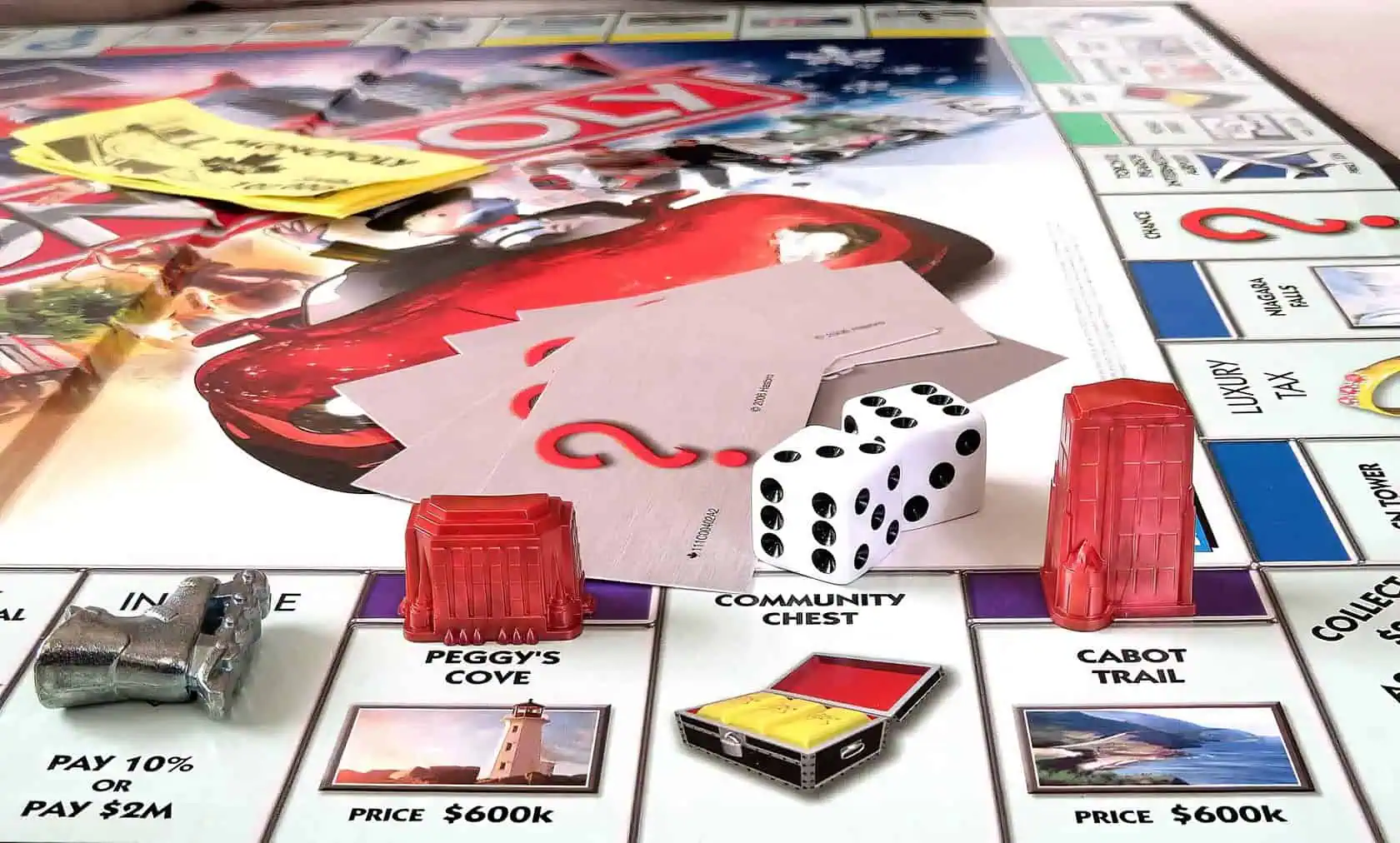Many Monopoly players get confused about when they can actually buy houses for their properties. The Monopoly board game includes 32 houses in total, which creates a limited supply that affects your building strategy.
This complete rules guide breaks down exactly when you can purchase houses, what restrictions apply, and how to avoid common mistakes that cost you the game. Master these house-buying rules to dominate your next game night.
Key Takeaways
You can only buy houses after owning all properties in a complete color group and keeping them unmortgaged.
Houses must be built evenly across all properties in a color set before adding second houses anywhere.
The game contains only 32 houses total, creating shortages that smart players exploit to block opponents’ development.
House prices range from $50 for brown properties to $200 for dark blue properties like Boardwalk.
Orange and red properties generate the highest returns because players land on them most frequently after jail.
Table of Contents
Rules for Buying Houses in Monopoly
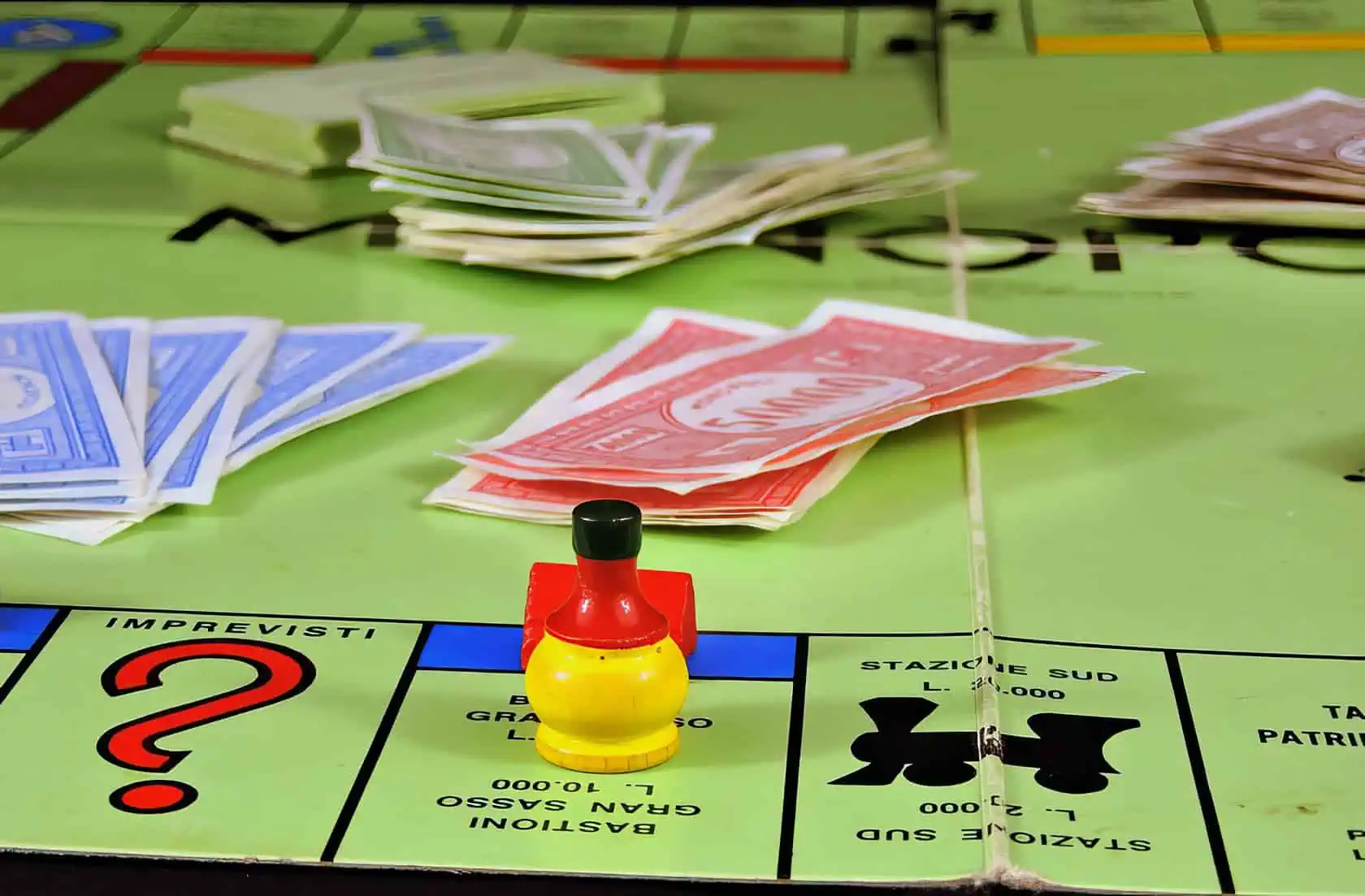
Buying houses in Monopoly follows strict rules that every player must master. You need complete ownership of all properties in a color group, and those properties must stay unmortgaged before you can start building your real estate empire.
What does it mean to own a complete color set?
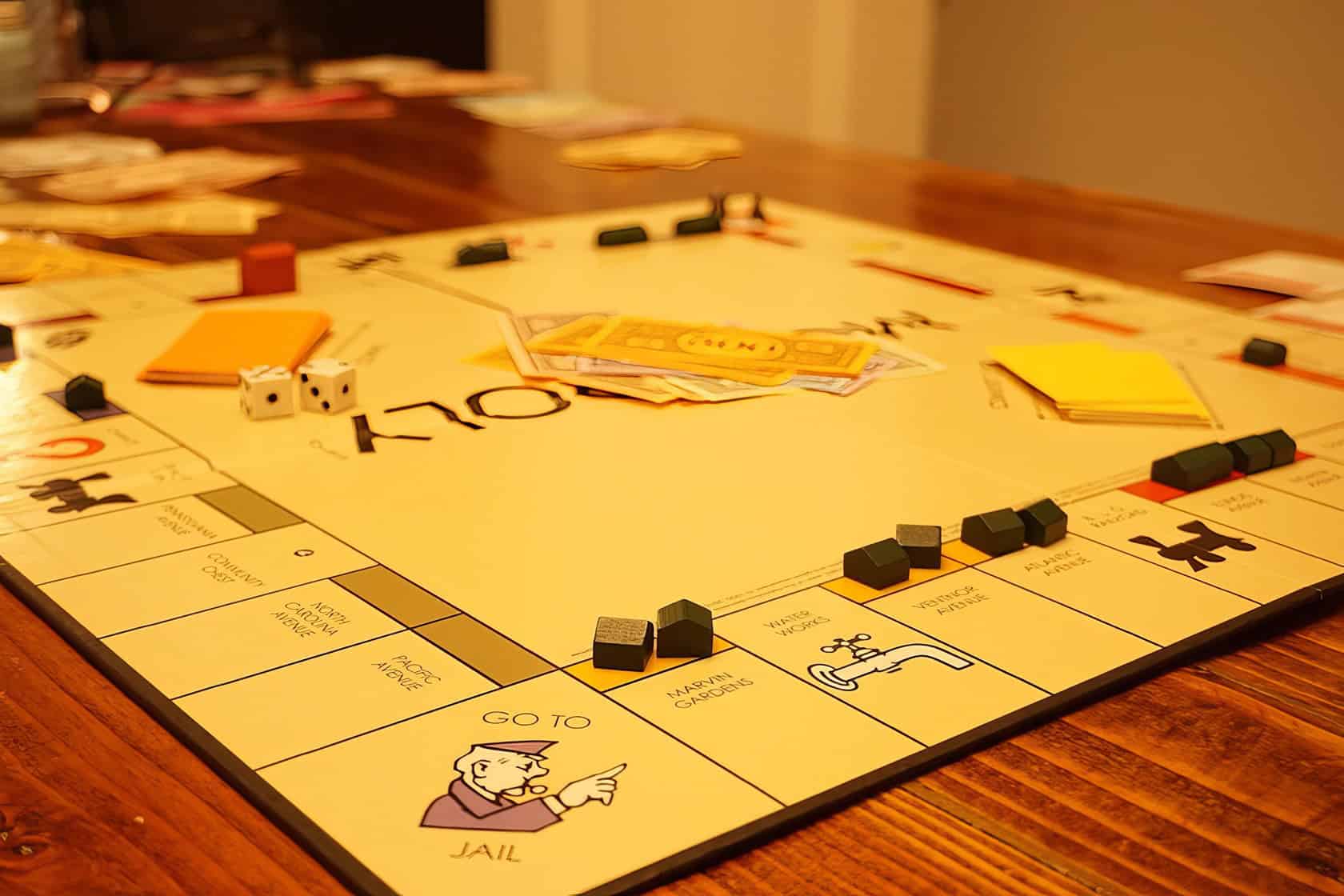
A complete color set means you own all properties in one monopoly color groups. Each color group contains two or three streets of the same shade. For example, the orange group includes St.
James Place, Tennessee Avenue, and New York Avenue. The dark blue group has only two properties: Park Place and Boardwalk.
Once you control every property in a color group, you create a monopoly. This monopoly gives you the power to build houses on those streets. Players must pay double rent on unmortgaged properties within your complete set, even without houses.
I’ve seen many Monopoly game sessions where owning just the orange or red properties can quickly drain opponents’ monopoly money reserves through these doubled rents.
Why must properties be unmortgaged to buy houses?

Owning all properties in a color group is just the first step. You must also make sure none of these properties carry debt before you can start building houses.
Mortgaged properties cannot have houses built on them, according to Monopoly rules. This restriction exists because a mortgaged property essentially belongs to the bank until you pay off the debt.
Think of it like trying to renovate a house that the bank has foreclosed on, you can’t make improvements until you clear the title deed cards. I learned this the hard way during a family game night when I tried to build on Illinois Avenue while it was still mortgaged.
The bank collects rent from mortgaged properties, so it makes sense they won’t let you develop them either. You must pay the full mortgage amount plus 10% interest to unmortgage each property before construction can begin.
This rule prevents players from building houses while avoiding their financial obligations to the bank.
The bank must be paid in full before any development can occur on mortgaged properties, ensuring players meet their debt obligations first.
The Process of Buying Houses

You can purchase houses during your turn, but only after you roll the dice and complete your move around the board. The equal development rule requires you to build houses evenly across all properties in your color group… meaning you can’t stack four houses on one property while leaving others empty.
When can you buy houses during your turn?

Players can purchase houses at any point during their turn, making this one of the most flexible actions in Monopoly setup. This freedom lets you buy property improvements right after landing on a space, collecting rent, or drawing chance and community chest cards.
The timing gives you strategic control over your real estate empire.
House purchases work differently than other monopoly actions because they don’t require specific triggers. Unlike drawing a chance card or paying fees at certain spaces, buying houses happens whenever you choose during your active turn.
Many players make the mistake of thinking they can only buy houses at the start or end of their turn, but the rules allow purchases between any actions. This flexibility proves crucial for blocking opponents or maximizing rent collection before your turn ends.
What is the equal development rule?
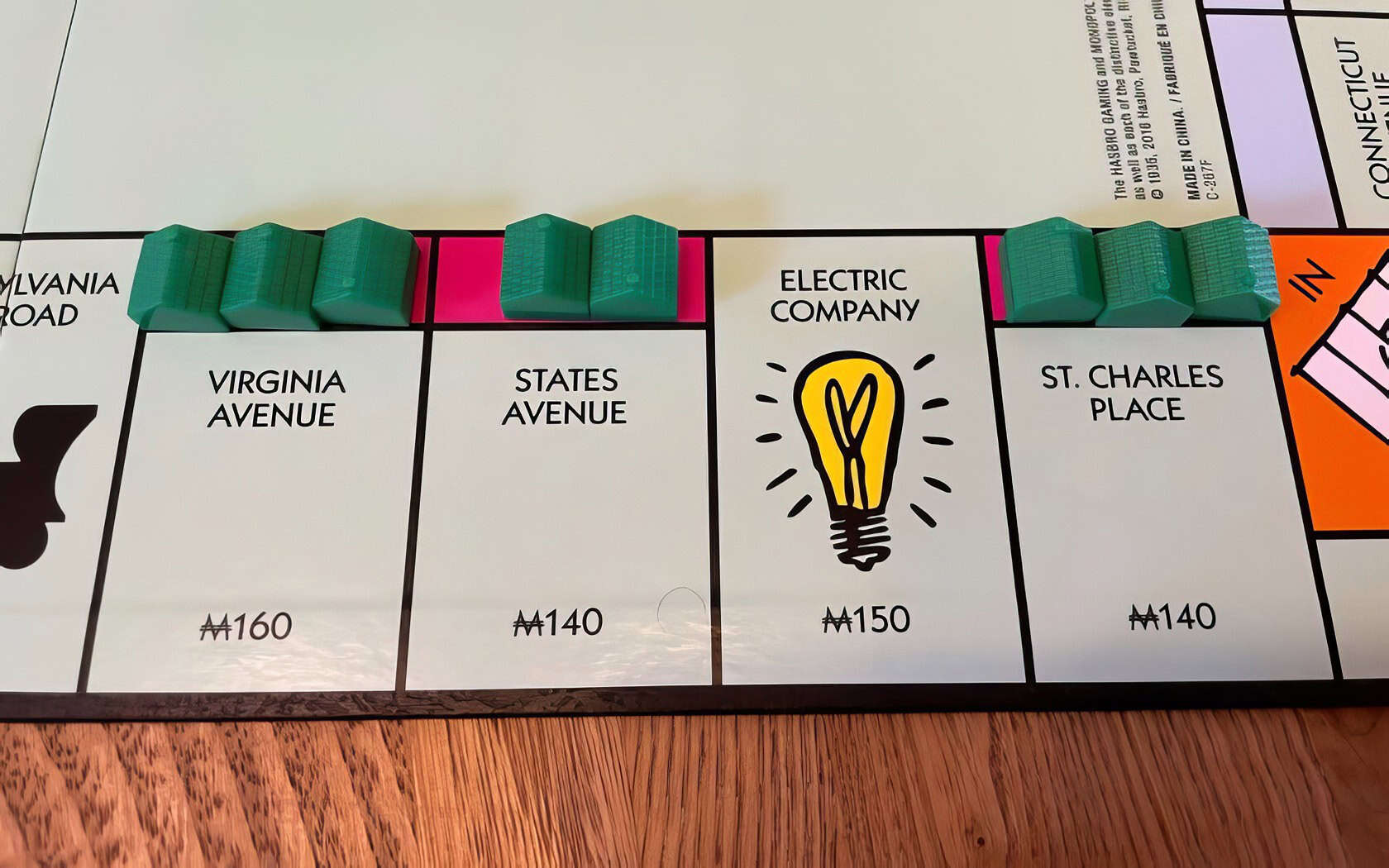
The equal development rule keeps house purchases fair across your monopoly properties. You cannot add a second house to any property until all properties in that color set have one house first.
This rule prevents you from loading up one property with multiple houses while leaving others empty.
Houses must be built evenly across properties within a monopoly, creating a balanced development pattern. If you own Mediterranean Avenue and another property in that brown set, both need their first house before either can get a second one.
This system ensures strategic planning rather than random house placement, making your monopoly investment more methodical. The cost structure for houses varies by property color group, but the equal development principle remains constant across all sets.
Cost of Buying Houses
House prices vary by color group, with cheaper properties like Mediterranean Avenue requiring less cash than expensive spots like Boardwalk. You pay the bank directly for all house purchases, and the cost appears on each property deed card for quick reference.
How are house prices determined by property color group?
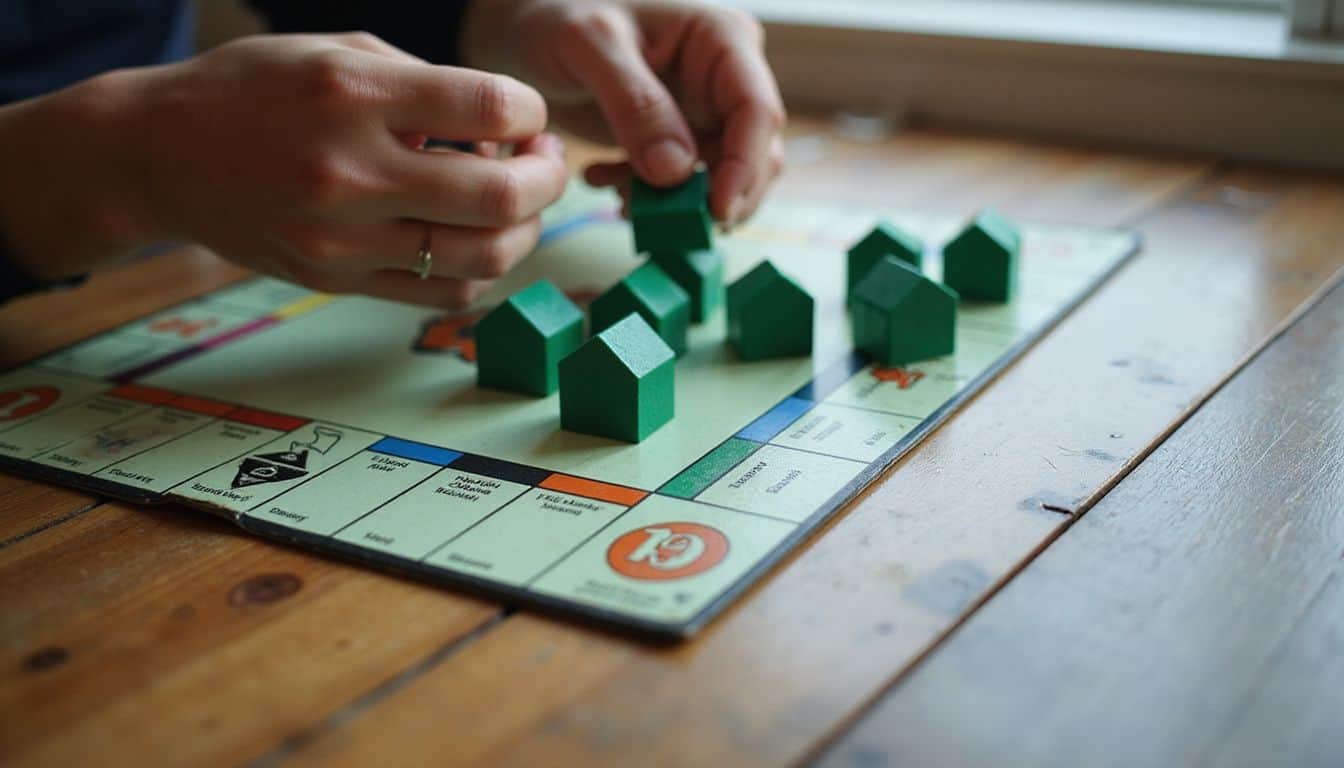
House costs depend entirely on which color group your properties belong to. Each Title Deed card shows the exact price you’ll pay for houses on that specific property. Mediterranean Avenue costs just $50 per house, while Boardwalk demands a hefty $200 per house.
The more expensive the property, the pricier the houses become.
Color groups follow a clear pricing pattern that makes sense once you learn how to play Monopoly. Brown properties (Mediterranean and Baltic) charge $50 per house, while light blue properties cost $50 too.
Orange and red properties jump to $100 per house, yellow properties cost $150, and the premium dark blue properties like Park Place require $200 per house. This pricing structure means your credit takes a bigger hit as you move around the board, but the rental income increases dramatically to match the investment.
Where do you pay for houses in Monopoly?
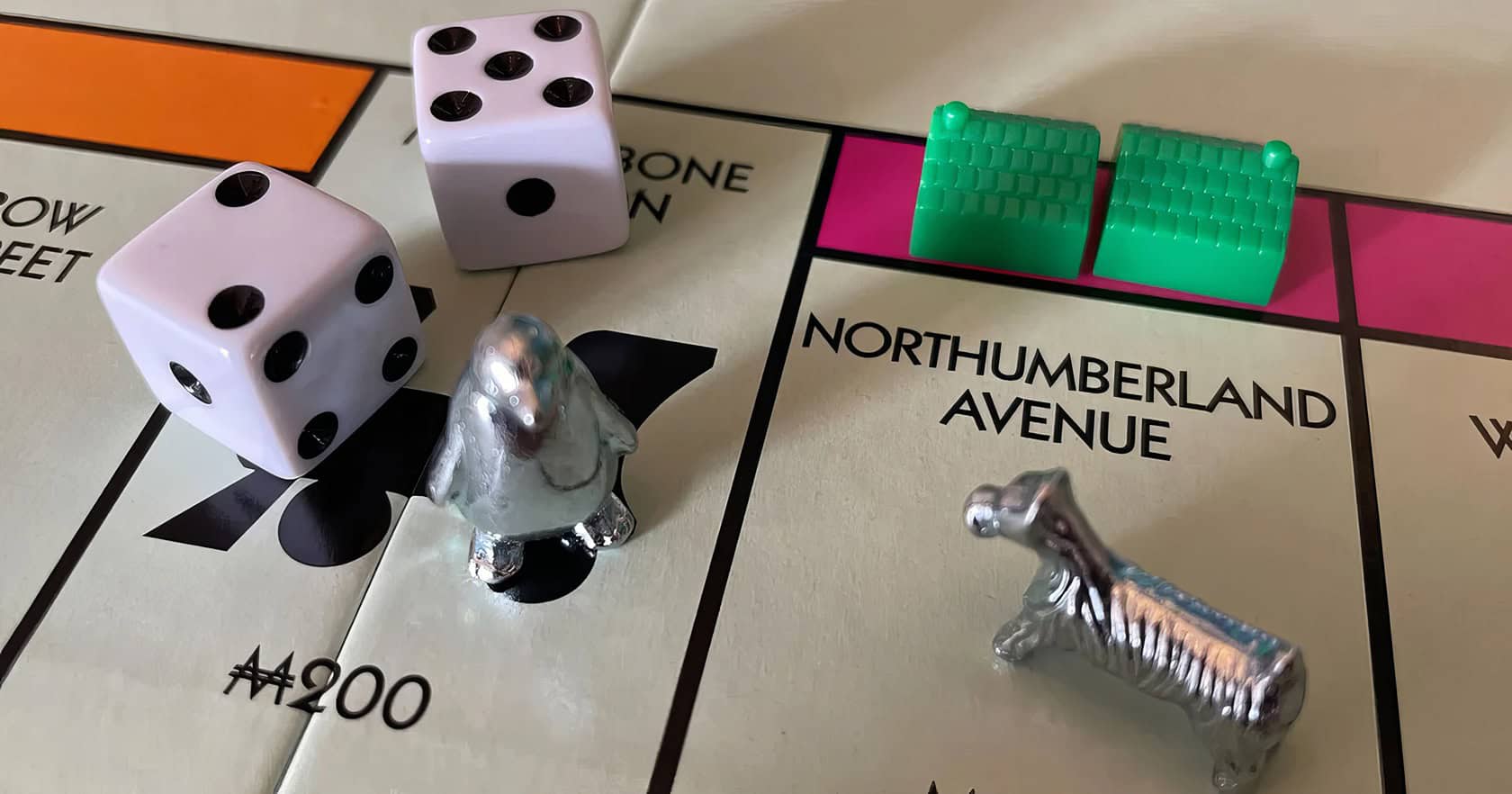
Players pay for houses at the Bank, not to other players or through any auction system. The Title Deed card for each property shows the exact house cost, which varies by color group.
Orange properties like St. James Place cost $100 per house, while premium dark blue properties like Boardwalk require $200 per house.
The Bank acts as the central financial hub for all property development transactions in Monopoly.
I’ve played countless Monopoly games where new players mistakenly try to pay the property owner for houses instead of the Bank. This common error can slow down gameplay and create confusion about the principal rules.
The Bank maintains the official house supply and collects all development fees, making it your go-to destination for building your real estate empire. Smart players keep their Title Deed cards visible to quickly reference house costs during their turn, avoiding delays that might give opponents time to reconsider their own strategies.
Restrictions on Buying Houses

Monopoly house buying comes with strict limits that can catch players off guard. The game’s building shortage rules and mortgage restrictions create real barriers that smart players must work around to dominate the board.
What happens during building shortages?
Building shortages create a fascinating twist in Monopoly that many players overlook. The bank supplies exactly 32 houses and 12 hotels, no more. Once these pieces run out, players must wait or participate in an auction to get their hands on available buildings.
This scarcity rule transforms the game’s strategy completely.
Smart players often hoard houses on purpose to create artificial shortages. I’ve seen games where someone buys four houses on each property in a color group but never upgrades to hotels.
This tactic blocks other players from developing their properties since the bank has no houses left to sell. The shortage forces everyone else to either wait for houses to become available again or bid against each other in auctions.
Some players get bankrupted because they can’t generate enough rent without houses on their properties. The building shortage rule makes property development a race against time and other players’ strategies.
Why can’t you buy houses on mortgaged properties?

Building shortages create one type of restriction, but mortgaged properties present another major barrier to house construction.
Mortgaged properties block all building activity because they sit in a suspended state. No buildings can be constructed on mortgaged properties, period. This rule exists because mortgaged properties cannot collect rent, making them inactive assets on the board.
Think of mortgaged properties like a paused game, they need to be “unpaused” through payment before any development can occur. Players must pay off the mortgage plus 10% interest to reactivate the property.
Only then can you start building houses or hotels on that space. This creates strategic decisions about cash flow versus property development. Some players mortgage properties to free up cash for other investments, but this choice comes with the cost of halted development.
Smart players balance their mortgage decisions with their building plans, especially when they control complete color sets. Understanding free parking rules becomes important here since landing on free parking gives you a breather to plan your next mortgage payoff or building spree.
Strategies for Buying Houses

Smart players focus on orange and red properties first since these spaces get landed on most often. You should buy houses right after you complete a color group, even if it means using your last dollars—rent jumps dramatically with just one house per property.
How do you prioritize high-rent properties?

Smart players focus on orange and red properties first because these spaces get the most traffic. Orange properties sit six to eight squares from jail, which means players land there often after rolling dice.
Red properties also catch many players since they’re positioned perfectly for common dice rolls. I’ve seen countless games where owning Illinois Avenue and St. Charles Place creates a money-making machine that drains opponents’ cash fast.
Owning all properties in a color group significantly increases rent, making strategic acquisition crucial for victory.
Target properties based on your opponents’ movement patterns and current positions on the board. Analyze opponents’ behaviors to identify high-rent target properties they might avoid or struggle to complete.
The mega edition adds more spaces, but the core strategy remains the same: grab color groups that force frequent payments. Properties near popular spaces like Free Parking or Go to Jail squares see more action than corner locations.
Focus your bidder strategy on completing monopolies rather than spreading thin across multiple incomplete sets.
When should you time your house purchases?

Smart timing separates winning players from those who go bankrupt. Buy houses right after completing a color monopoly, especially if you have enough cash reserves for multiple properties.
Your judgment and financial standing will allow you to build aggressively while other players still land on cheaper rent spaces. Purchase houses before opponents complete their own monopolies, since this creates immediate pressure on their cash flow.
Building shortages work in your favor if you act fast. The game includes only 32 houses total, so buying early prevents others from developing their properties later. Time your purchases after collecting rent from expensive properties or passing Go.
This option gives you maximum cash to work with while maintaining an even build across your color set. Avoid buying houses right before paying large expenses like chance cards or luxury tax, since you might need that money for unexpected costs.
Common Mistakes to Avoid When Buying Houses

Even experienced players make costly errors when building houses on their properties. These mistakes can drain your cash reserves and leave you vulnerable when opponents land on your spaces.
What happens if you ignore the equal development rule?
Breaking the equal development rule creates serious problems for your Monopoly game. Players cannot add a second house to any property until all properties in a set have one house.
This rule keeps the game fair and prevents players from creating super-powered properties while leaving others empty. I learned this lesson the hard way during a family game night when my cousin tried to stack four houses on Boardwalk while Park Place sat empty.
The other players caught the mistake, and we had to redistribute the houses correctly.
Ignoring this rule can negatively impact financial strategy and investment decisions across your entire game plan. Your opponents will challenge illegal house placements, forcing you to restructure your properties.
This disruption wastes valuable turns and can leave you vulnerable to bankruptcy. Smart players use the equal development rule to their advantage by buying up all available houses, creating artificial shortages that prevent rivals from developing their monopolies.
The rule also affects your cash flow since you must spread investments evenly rather than focusing all resources on your highest-rent spaces.
How can you avoid overextending your finances?
Breaking the equal development rule can be detrimental to your game, but inadequate financial planning will lead to failure even more quickly. Successful players adhere to the 28/36 Rule to maintain financial stability throughout their Monopoly game.
This rule recommends keeping property investments at 28% of total cash flow, while all expenses should remain under 36% of available funds.
Cash management becomes crucial once you begin building houses on your color groups. Many games have ended with players purchasing every house they can afford, only to land on Boardwalk with hotels and face bankruptcy.
Maintain sufficient cash reserves to cover at least three high-rent payments, especially if opponents control expensive properties like the dark blue or green monopolies. Wise timing involves buying houses after passing dangerous properties, not before.
Consider using strategic jail management to avoid costly spaces while your opponents deplete their cash reserves on risky moves.
How Houses Lead to Hotels
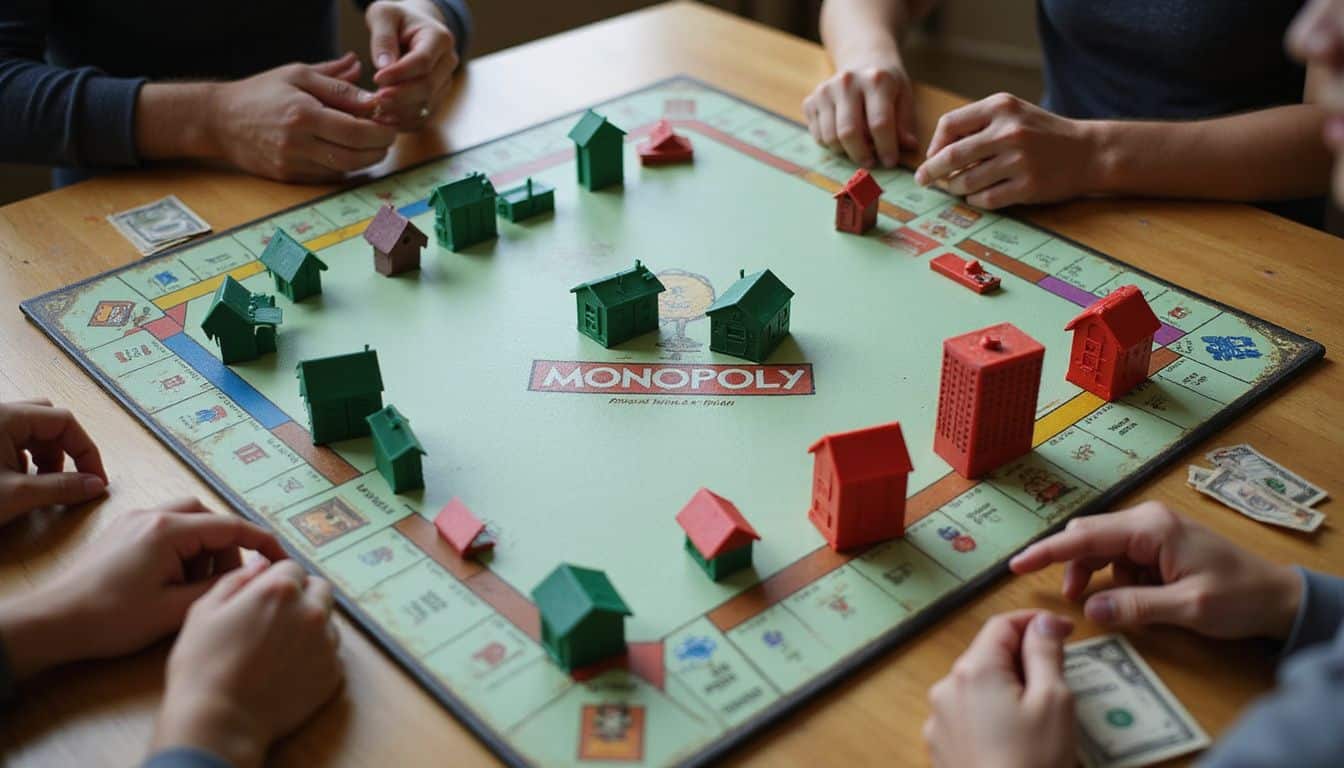
Once you’ve built four houses on every property in a color group, you can upgrade them to hotels. This upgrade gives you the highest rent possible from that property set, making it a powerful move that can drain opponents’ cash reserves quickly.
How do you upgrade houses to hotels?
Upgrading houses to hotels follows a simple process. Players must return four houses to the bank for each hotel they want to build. This trade-in happens on properties where you already own four houses.
The even build rule applies here too, meaning you can’t skip ahead on one property while others lag behind.
Hotels cost the same as houses for that color group, plus you give up the four houses already there. Each property can hold only one hotel maximum. Properties must stay unmortgaged during this upgrade process.
The bank has a limited supply of hotels, just like houses, so shortages can block your building plans. Smart players often use this shortage strategy to their advantage, hoarding houses to prevent opponents from upgrading to the more profitable hotels.
What are the prerequisites for buying hotels?
Players must own all properties in a monopoly set to buy hotels, just like with houses. Your properties cannot be mortgaged or loaned when you want to purchase hotels. Houses must be built evenly across properties in a set before a hotel can be purchased.
This means each property in your color group needs four houses before you can upgrade any single property to a hotel.
You must return four houses to the bank when buying each hotel. The bank needs to have hotels available for purchase, since the game includes only 12 hotels total. If no hotels remain in the supply, you cannot buy one even if you meet all other requirements.
I’ve seen players get stuck with four houses on each property because someone else grabbed all the hotels first, which actually blocks further development until hotels become available again.
How Will Monopoly House-Buying Strategies Evolve in 2025?
Digital Monopoly platforms will reshape house-buying tactics in 2025. Online versions already track property statistics and rent calculations automatically. Smart algorithms might suggest optimal building patterns based on opponent behavior.
Mobile apps could alert players about building shortages before they happen. These tech advances will help geeks make faster, data-driven decisions during gameplay.
Advanced editions like Monopoly: The Mega Edition will gain popularity among strategy enthusiasts. These versions feature expanded boards and complex building rules that demand deeper planning.
Players won’t rely on the simple “do not pass go” mentality anymore. Instead, they’ll calculate probability matrices for property landings. Even traditional elements like the Get Out of Jail Free card will become part of sophisticated timing strategies for house purchases.
People Also Ask
When can you start buying houses in Monopoly?
You can buy houses once you own all properties in a complete color group. This means owning every property of the same color on the board, creating what’s called a monopoly.
What are the basic rules for purchasing houses in Monopoly?
Houses must be bought evenly across all properties in your color group. You cannot place two houses on one property while another property in that same group has zero houses.
How many houses can you place on each property?
Each property can hold a maximum of four houses before you must upgrade to a hotel. The bank has a limited supply of 32 houses total, so availability can affect your building strategy.
Can you buy houses during any turn in the game?
You can purchase houses at any time during your turn, not just when you land on the property. However, you cannot buy houses between other players’ turns or during auctions.
References
https://monopoly.fandom.com/wiki/Color_Set
https://monopoly.fandom.com/wiki/Houses
https://tabletopgameplanet.com/when-can-you-buy-houses-in-monopoly/ (2021-09-22)
https://www.thesprucecrafts.com/when-can-i-buy-houses-hotels-411891
https://lootbar.gg/blog/en/monopoly-go-guide-to-maximizing-rent-collection.html (2025-04-22)
https://remptongames.com/2020/11/16/the-ultimate-monopoly-strategy-guide/ (2020-11-16)
https://officialgamerules.org/game-rules/monopoly/
https://boardgames.stackexchange.com/questions/50998/building-houses-evenly-in-monopoly (2020-04-23)
https://sprintfunding.com/14-common-home-buying-mistakes-to-avoid/ (2024-02-23)
